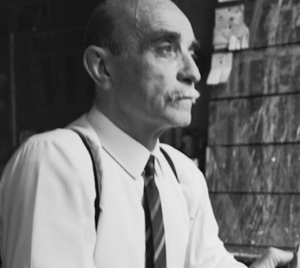Biography

Born in 1899 in Rosario de Santa Fé, Argentina, from a Milanese father and an Argentine mother, after living in Milan from 1905 to 1922, he returned to Argentina, where for several years he worked as a sculptor in his brother’s studio. In 1926 he took part in the first exhibition of Nexus, a group of young Argentine artists active in Rosario de Santa Fé. Returning to Italy in 1928, he attended the Brera Academy of Fine Arts in Milan for two years. In this city he held his first personal exhibition in 1930, at the Galleria Il Milione. In 1935 he settled in Paris, where he joined the Abstraction-Création group and began working with ceramics in Albisola, Italy, and in Sèvres, France. In 1939 he joined the Milanese group Corrente of expressionist artists and the following year he moved to Buenos Aires, where with a group of his students he founded the Academy of Altamira in 1946 and published the Manifiesto Blanco. Returning to Milan in 1947, the artist signs the First manifesto of Spatialism together with a group of writers and philosophers. 1949 marks a turning point in the artist’s career; in fact he creates the Holes, the first series of paintings in which he punctures the canvases, and his first “space environment”, a set of shapeless sculptures, fluorescent paintings and infrared lights to be observed in a dark room. This kind of work soon led him to use neon tubes in the decoration of ceilings. At the beginning of the 1950s he participated in the exhibitions of the Art Informel movement, and throughout the decade he experimented with various effects, such as cuts and perforations, both in painting and sculpture. The artist visited New York in 1961, on the occasion of one of his exhibitions at the Martha Jackson Gallery. In 1966 he collaborated with the La Scala theater in Milan, designing sets and costumes. In the last years of his artistic career Fontana has been increasingly interested in the preparation of his work in the many exhibitions dedicated to him around the world, as well as in the idea of purity achieved in his latest blank canvases. This is evident in the Venice Biennale of 1966, where the artist designs an environment for his works, and at the Kassel Documenta of 1968. He dies in Comabbio, Varese in 1968.